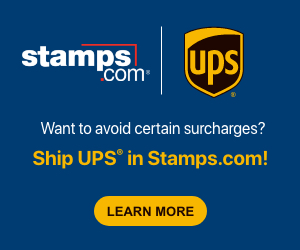 Credit-card sales are fast and easy, and usually they’re secure. But what happens when they’re not? Despite safeguards and increasing consumer awareness, acts of fraud do occur – and they occur on a more frequent basis with international sales since the red flags are a little harder to spot. Scammers are out there and, simply put, their goal is to make out like a bandit while you lose your shirt.
Credit-card sales are fast and easy, and usually they’re secure. But what happens when they’re not? Despite safeguards and increasing consumer awareness, acts of fraud do occur – and they occur on a more frequent basis with international sales since the red flags are a little harder to spot. Scammers are out there and, simply put, their goal is to make out like a bandit while you lose your shirt.
With domestic orders, it’s fairly simple to avoid fraud thanks to built-in safeguards like address verification offered by payment processors and online marketplaces. However, international orders open your business up to fraud of a different level. Without the automatic protection tools afforded to domestic transactions, sellers and marketplaces may fall more easily victim to fraud. Knowing what to watch for and how to fend off potential pitfalls can greatly reduce the risks. Here are some points to keep in mind that may help keep fraud at bay, and your international transactions smooth and secure.
Before You Ship
When processing orders, watch for the following red flags. These types of transactions aren’t always fraudulent, but they warrant a close look regardless:
- Larger than average orders
- Large quantities of the same item
- Big-ticket item orders
- Rush or overnight delivery orders
- Multiple shipments to the same address, but processed with different payment methods
- P.O. box vs. physical address for the shipment destination
- Names that don’t match up with the email address
Certain countries account for a large percentage of international fraud cases. When you receive an order from any of the following countries, pay special attention:
- Belarus
- Estonia
- Ghana
- Hungary
- Indonesia (some buyers in Indonesia use Singapore or Malaysia as the destination country name, because the respective postal services know to find the Indonesian locations)
- Latvia
- Lithuania
- Macedonia
- Malaysia
- Nigeria
- Philippines
- Romania
- Russia
- Singapore
- Slovak Republic
- Thailand
- Uganda
- Ukraine
- Yugoslavia
Credit Card Red Flags
Often, credit cards can provide clues to tip you off to potential fraudulent activity. Make a habit of following these guidelines on your international orders:
- Use the BIN Database. The first six digits of a credit card, known as the Bank Identification Number, indicate the country of origin. It’s easy to check at bindb.com; if the issuing bank country isn’t the same as the country from which the order originates, investigate further.
- Make bank contact. Get in touch with the issuing bank to make sure the credit card belongs to the international buyer.
- Ask for backup. You’re entitled to ask that your international buyer fax, or email and scan, both sides of the credit card, as well as other identification.
- Use your resources. Your International Merchant Account processor can sometimes help if you’re having trouble determining if an order is for real; remember that overseas banks don’t always offer fraud-prevention features like Card Verification Values (CVV) and Address Verification Services (AVS).
More Tips to Remember
- Flaunt anti-fraud flair. Include notices, buttons and images on your website declaring your dedication to sniffing out fraud. This could dissuade scammers from placing orders in the first place.
- Sign on the dotted line. Add signature confirmation on shipments, particularly high-value ones. It costs a little more, but buyers can’t claim to have never received an order if their signature is on file.
- Bump up your toolbox. Purchase advanced fraud-detection tools via your International Merchant Account. Again, the extra upfront cost can protect you in the future.
Naturally, there’s no way to avoid or eliminate fraud altogether in your international transactions, but staying a step ahead of the game can drastically reduce your chances of being burned when selling and shipping abroad.






